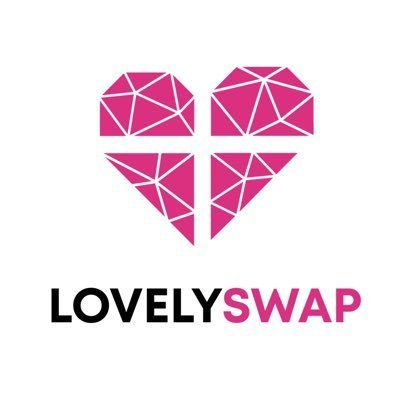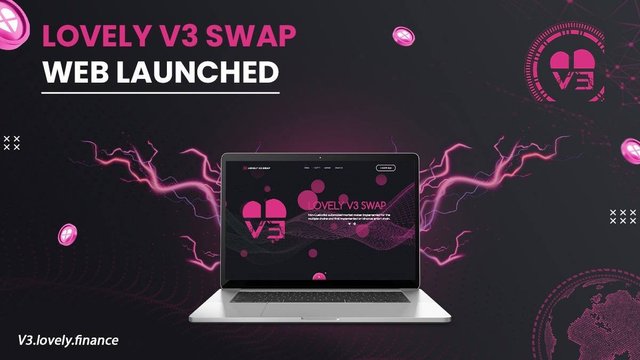There are plenty of reasons why an innovative company would launch two or more very similar brands. Perhaps a new segment needs to be subdivided, or perhaps there is already a brand in some secondary category that could use more visibility. Perhaps the overarching name has been damaged by negative press, and a new sub-brand is the perfect way to re-launch the company’s image.

This article analyses the implications of launching multiple chains from a single business entity, using LOVELY V3’s recent decision as an example. We see many companies do this for one reason: to create better internal efficiency so as to improve profits. It might seem counterintuitive that reducing overhead costs for a smaller chain would have such a massive impact on profitability, but it makes sense when you think about what those costs actually are.
LOVELY V3 Swap Automated Market Maker
An automated market maker is programmed to buy and sell on a market at a constant price determined by an algorithm. It’s a simple yet powerful tool that efficiently connects supply and demand at a single price point. A fully integrated AMM can combine trading with pre-sale purchases and post-sale token repurchases, thereby firmly locking in the profits for the company. The beauty is that an AMM can calculate when to buy/sell/repurchase based on market conditions, meaning it can be set to liquidate even on a brand new chain.
Business Case for multiple chains
When a company launches a new chain, it has its old chain as collateral. It gets a loan based on the value of its current operations, the equity in its brand name, the goodwill associated with that name, the intellectual property in its products, the credibility of its team, and the attractiveness of its plan.

The loan is supposed to be used to set up the new chain’s operations, paying for things like staff salaries, marketing, facility rental, and equipment purchases. The downside is that these loans are not one-time expenses, but rather monthly recurring costs. In order to repay the loan with interest, part of the chain’s revenue must go towards making those payments. This doesn’t mean the chain has negative profit margins: It simply means that the profits are being reinvested in the chain’s own operations.
Why a market maker?
A market maker can bring the liquidity needed to facilitate quick buy and sell orders. But the true value of a market maker is that the AMM can buy and sell at a constant price (determined by an algorithm), thus locking in profits for the company.
.jpg)
A successful AMM relies on having a healthy balance of buy and sell orders, so it needs to have multiple customers. A single customer might buy tokens and then sell them almost immediately — causing the AMM’s price to fluctuate wildly. Having multiple customers creates a more stable price.
What is an automated market maker?
An automated market maker (AMM) is a computer program that facilitates buying and selling based on market demand, with the end goal of profiting from small price fluctuations.
Livestreaming services and chain liquidity
One of the most valuable uses of a combined business entity would be to offer exclusive livestreaming services on the original chain, while cashing in on the higher demand for token repurchases on the new chains.

The original chain would be the one that provides the livestreaming service, and it would accrue a percentage of the income from the livestreams. The combined business entity could then repurchase tokens with that revenue, providing the new chains with liquidity.
Consolidated accounting and chain governance
The chains may be combined for purposes of accounting, so that the original chain’s revenue and expenses are accounted for by the combined business entity. This would simplify the accounting process for the new chains, as well as provide a clear picture of the original chain’s performance.

The new chains would be governed by the combined business entity, meaning that decision-making power would be concentrated in a single board. This could make governance much more efficient, while still providing a democratic process for the original chain.
Is a combined business entity worth it?
Combining chains is a way to boost profitability by reducing overhead costs. It’s a good solution for businesses that want to expand, but which don’t have the resources to do so under their own steam. A combined business entity is a strategic decision that comes with many benefits, but it’s important to keep in mind that the success of each chain is still tied to its own performance. In other words, a combined business entity doesn’t provide any kind of magical shield against bad decisions. Combining chains can be a great way to reduce overhead costs, but it requires a great deal of planning to succeed.
#BSCGems #BinanceSmartChain #altcoin #lovelyinu #lovelyinufinance #lovelyv3swap
WEBSITE LINK:
https://v3.lovely.finance/
JOIN AND FOLLOW MUST:
Twitter Link:
https://twitter.com/V3Swap?t=oBH-S-N1...
Telegram Group Link:
https://t.me/lovelyv3swap
Telegram Channel Link:
https://t.me/inspectorlovely
bitcointalk username : Uzzalroy
https://bitcointalk.org/index.php?action=profile;u=2348504
Wallet Address: 0x62Cf6b66B4795C8Ca749d6e8dad6ad52A3986eb9